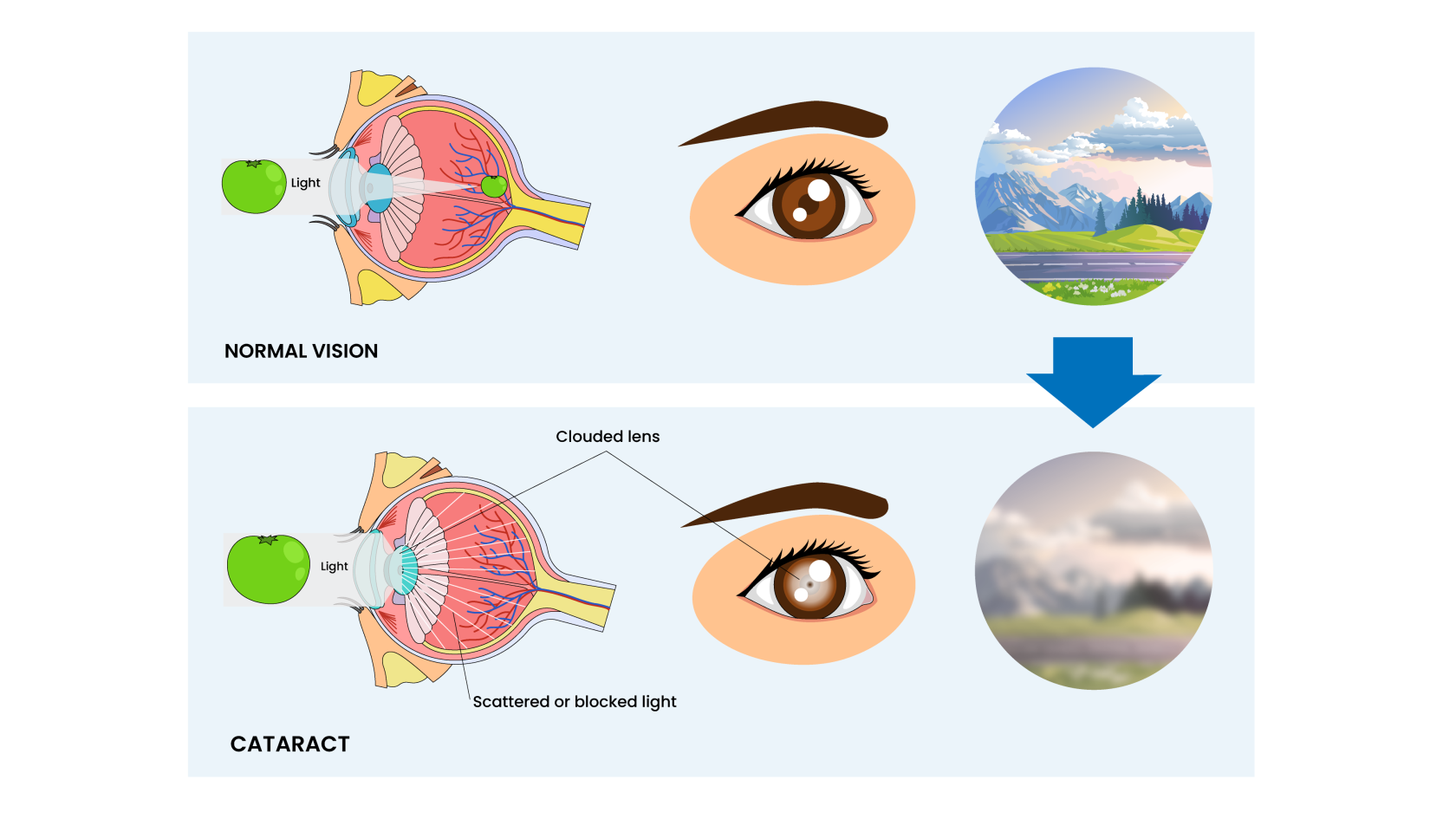Cataracts are the most common cause of reversible vision loss in the world and affect particularly older adults. Despite being very common and worldwide known, many people do not fully understand what cataracts are, what causes them or which the treatment is. This article aims to shed light on this condition, offering clear and practical information for anyone concerned about their eye health.
Let’s start by understanding what cataracts are!
A cataract is the clouding of the eye’s natural lens, which lies behind the iris and the pupil. This natural lens is very important to the eye’s function, helping to focus the light that enters the eye onto the retina, allowing a clear vision. When this lens becomes cloudy, as a result of the normal aging of our eye, the light that enters the eye is scattered, resulting in blurry, hazy or less colorful vision and resulting in loss of visual acuity.
As, in most cases, this is a natural aging process, the development of the cataract is slow, progressive and initially does not interfere with most activities. However, over time, it can affect your ability to read, drive, recognize faces, or perform daily tasks.
So, who is at risk of developing a cataract?
In fact, as this is a normal aging process of the eye's lens, all of us will develop cataracts.
But when is it going to happen?
Although cataracts can occur at any age, they are most commonly associated with ageing and most people begin to develop cataracts after age 60. But there are some risk factors that can increase the risk of developing a cataract at an early age. For instance, a family history of early age cataracts may increase this risk; also, people with diabetes are more likely to develop cataracts at an earlier age. Smoking and prolonged sun exposure can also promote faster cataract progression. Another important risk factors are ocular trauma, previous ocular surgery or radiation treatments on your upper body. The long-term use of corticosteroids is also a known risk factor.
How can I notice that I have a cataract?
Cataracts often develop slowly and painlessly, so many people may not notice the changes in vision right away. However, with time, it is normal to notice some changes and common symptoms include: blurred, cloudy, or dim vision, difficulty seeing at night, sensitivity to light, glare and seeing "halos" around lights, frequent changes in eyeglass or contact lens prescription, fading or yellowing of colors and double vision in a single eye.

If you are experiencing any of these symptoms, it is important to consult an ophthalmologist to evaluate your visual acuity and perform an eye examination. These tests will help to determine the presence, type, and severity of cataracts and also if there are any other ocular conditions that can affect vision.
What is the treatment for cataracts?
Currently, the only effective treatment for cataracts is surgery. When symptoms begin to interfere with daily life, cataract surgery is often recommended.
Cataract surgery is one of the most commonly performed and safest surgeries worldwide. It involves removing the clouded lens and replacing it with an artificial intraocular lens (IOL). The procedure is usually done on an outpatient basis and typically takes less than 30 minutes.
Most people experience improved vision within a few days after surgery, though complete healing may take several weeks. Complications are rare, but like any surgery, there are risks, including infection, inflammation, or retinal detachment.
To summarize, cataracts are a normal part of aging, but they don't have to mean a permanent loss of vision. Thanks to improved access to eye care, as well as modern surgical techniques, cataract surgery is a safe and highly effective solution. Regular eye check-ups, a healthy lifestyle, and protecting your eyes from UV damage can go a long way in maintaining your vision as you age.
For more information, please contact Algarve Biomedical Center.












